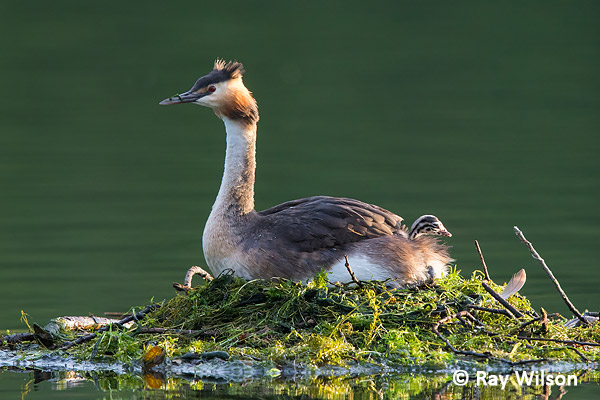
- Home
- Photography Tours
- Diary / Blog
- Galleries
- Foreign Trips
- Tasmania 2016
- NE Queensland 2016
- Western Alps 2016
- NE Spain 2016
- Australia's Wet Tropics 2015
- Australia's Top End 2015
- SW Australia 2015
- Switzerland 2015
- Andalucia 2015
- Belize 2015
- Australia 2014
- Switzerland 2014
- Belize 2014
- Bahama Islands 2014
- Switzerland 2013
- Ecuador 2012-2013
- Florida 2011-2012
- Vancouver Island 2011
- Australia 2010
- Peru 2008
- Bulgaria 2007
- Lesvos 2006
- California 2006
- New Zealand 2005
- Extremadura 2005
- Goa, India 2004
- The Gambia 2003
- About
August 2017
Attenborough Nature Reserve, Nottinghamshire
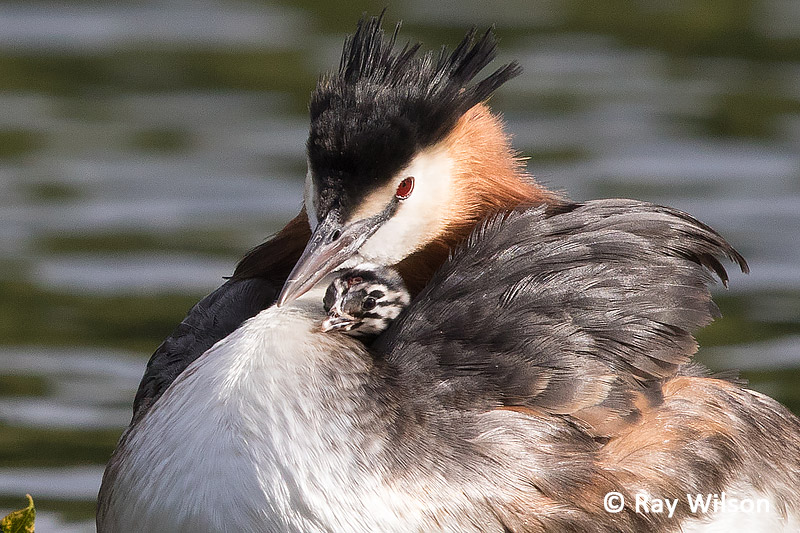
male Great Crested Grebe (Podiceps cristatus) with a 4-day old chick
I didn't get out as much as I would have liked in August. First, a knee injury prevented me from walking more than a few hundred metres for the first couple of weeks then I caught a lung infection that had me coughing my lungs up every time I tried to move. Not a lot of fun!

male Great Crested Grebe (Podiceps cristatus) incubating eggs
If you are a regular visitor to this website you may remember that I spent the latter part of July keeping an eye on a pair of Great Crested Grebes that had an unusually large clutch of 9 eggs. The good news is that the first chick hatched on 3rd August, but unfortunately, despite continuing to incubate for a further two weeks through a spell of cold and wet weather the nest was eventually abandoned without any further chicks hatching. I suspect the water level rose a bit too much due to the high volume of rain and prevented the adults from being able to keep the eggs warm enough to allow their proper development.
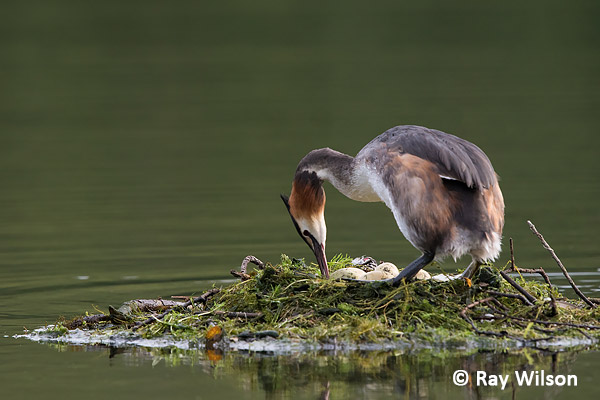
Male rearranging the eggs
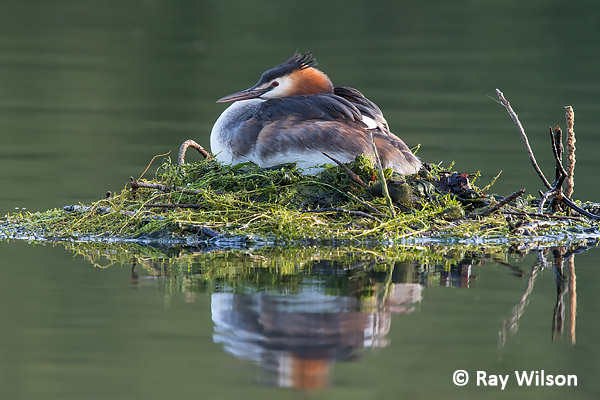
Male on incubating duty
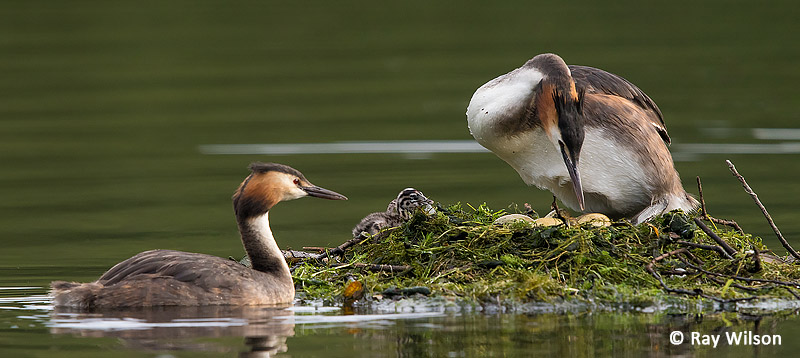
changing over the incubating duties with the chick on the edge of the nest
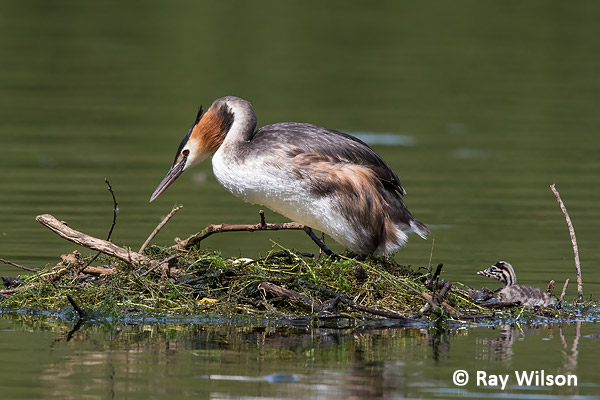
Male climbing onto the nest recently vacated by the female
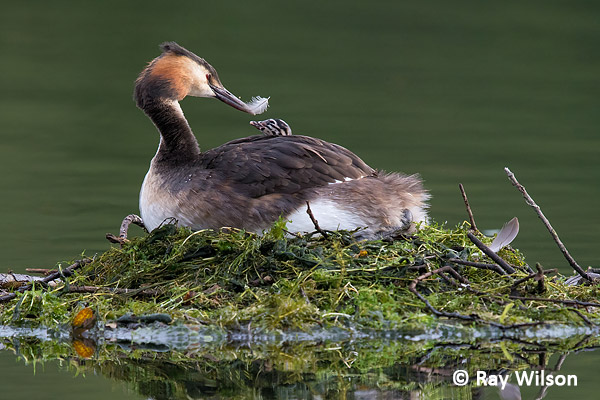
Great Crested Grebe (Podiceps cristatus) feeding a contour feather to its chick
An unusual behaviour found in most grebes, but particularly in Great Crested Grebes, is the habitual ingestion of feathers. The reason for this behaviour is unproven, but it has been postulated that feathers aid pellet formation for the ejection of parasites and indigestible material, such as fish bones, or to act as a kind of strainer to help prevent bones leaving the stomach before they have been properly digested or ejected from the mouth in a pellet.
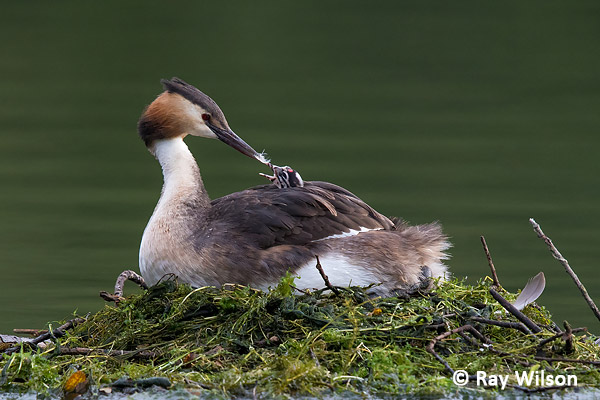
The female feeds a dry feather to the chick
Feeding on feathers is particularly marked during the first couple of weeks after hatching. During the time I was watching the grebe family during the first couple of days after hatching about 90% of the items presented to the chick were contour feathers. These were usually wetted before being given to the chick but were also presented dry.
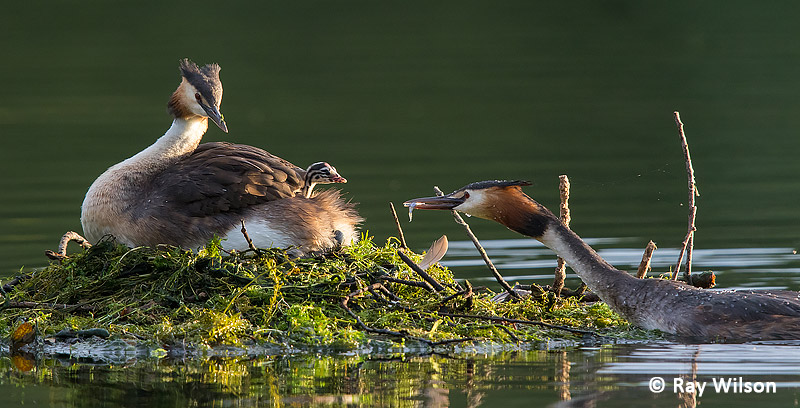
The male returns from a fishing foray with a tiddler for the chick
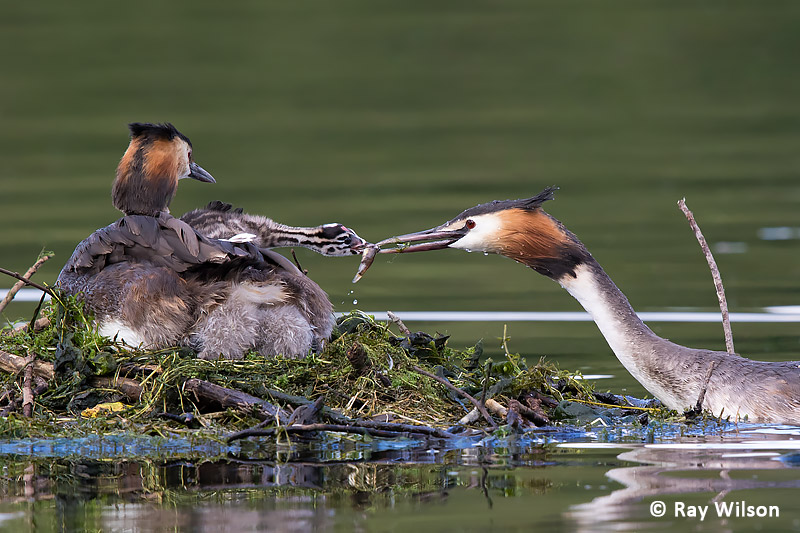
male Great Crested Grebe (Podiceps cristatus) feeding a fish to its chick
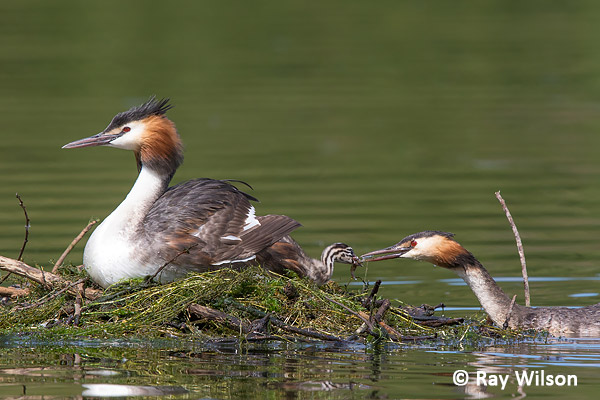
...and now it's the female's turn to feed a fish to its chick
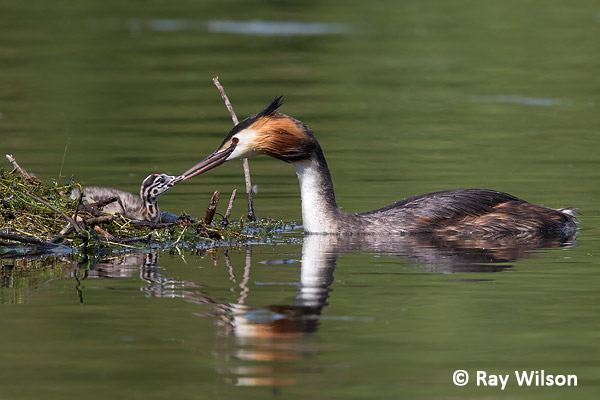
The male feeding the chick
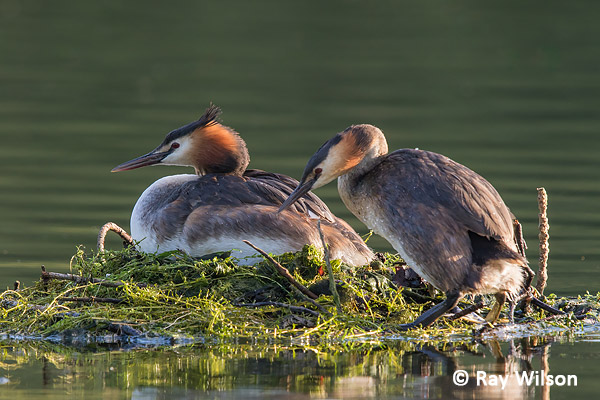
The female returning to the nest to take over incubating duty from the male
Female incubating the eggs in the early morning sun while the chick keeps warm on her back
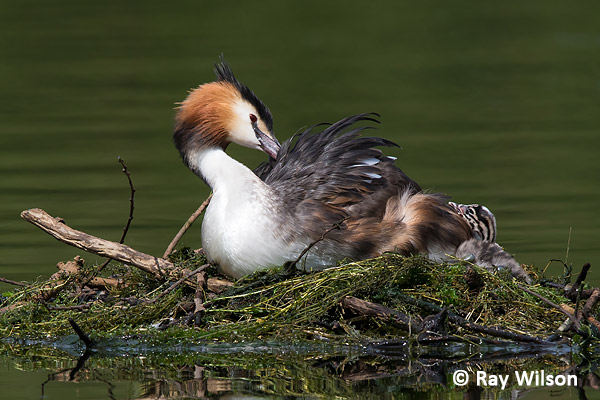
male Great Crested Grebe (Podiceps cristatus) preening its back
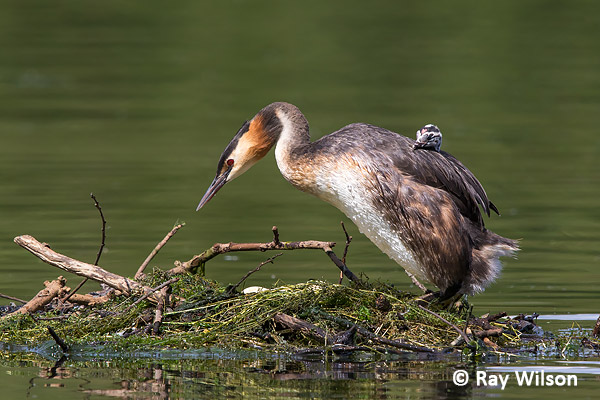
The female rearranging the unhatched eggs with the chick desparately trying not to fall of her back
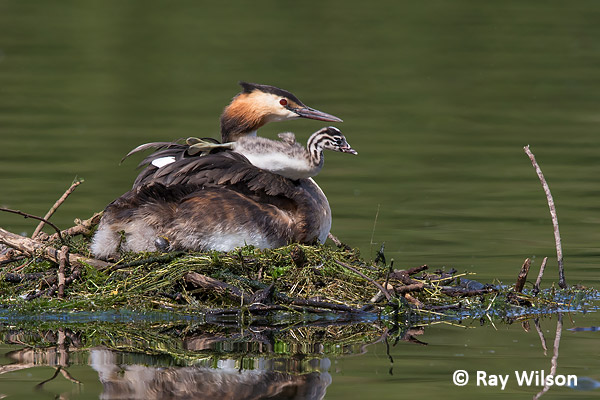
Just out of shot the male is returning with a fish so the chick decides it is time to vacate the warmth and security of the female's back and jumps off to greet the male
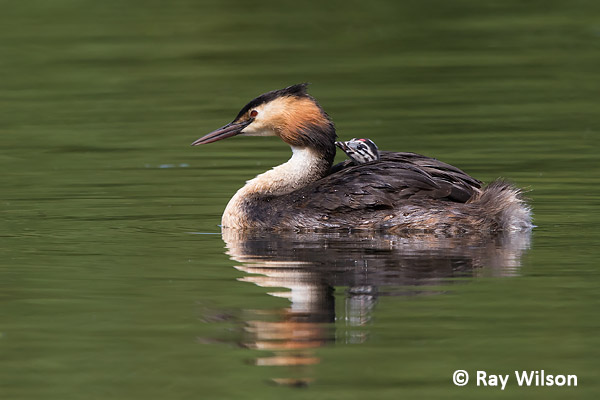
female with its single chick riding piggyback
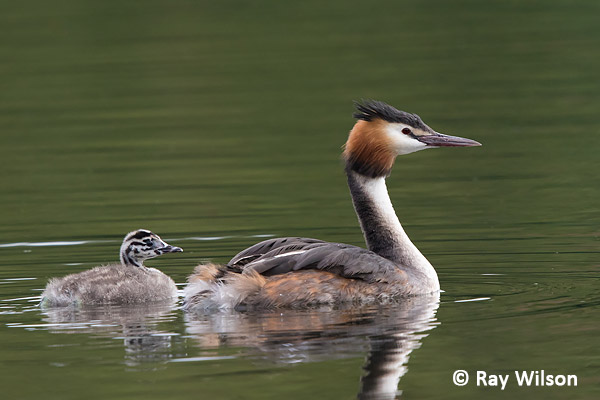
male Great Crested Grebe (Podiceps cristatus) with its 2 week old chick the day after the nest was abandoned
While watching the grebes, a female Brown Hawker was busy laying eggs in the water on partially submerged tree roots on the bank beside me.
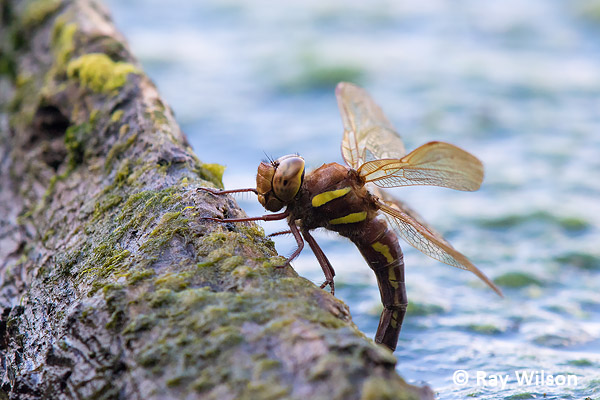
female Brown Hawker (Aeschna grandis) laying eggs on an emergent tree root
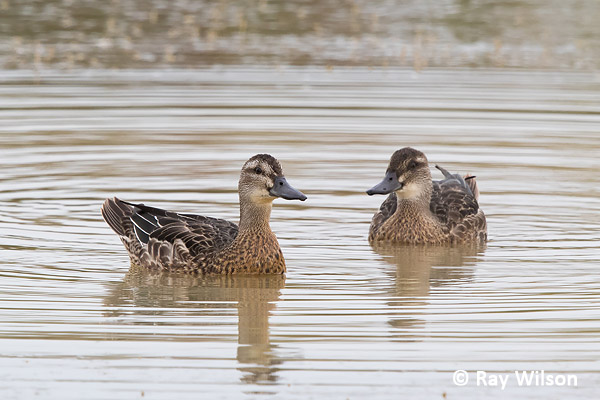
Garganey (Spatula querquedula)
A couple of Garganey turned up at Attenborough in the middle of the month and hung around for a couple of weeks before continuing their migration south to their wintering grounds in Africa.
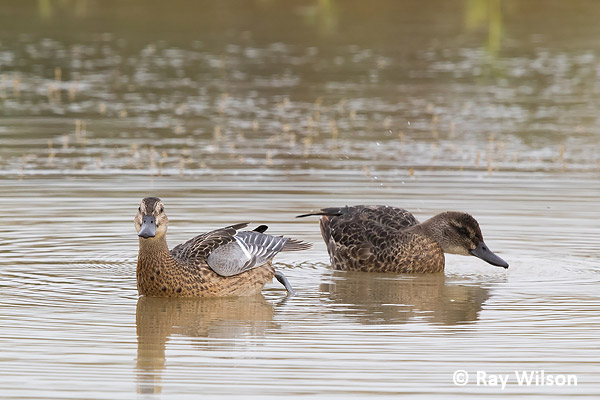
Garganey (Spatula querquedula)
The patterning on the upperwing of the bird on the left identifies it as an immature male. The one on the right is an adult female.

Garganey (Spatula querquedula)
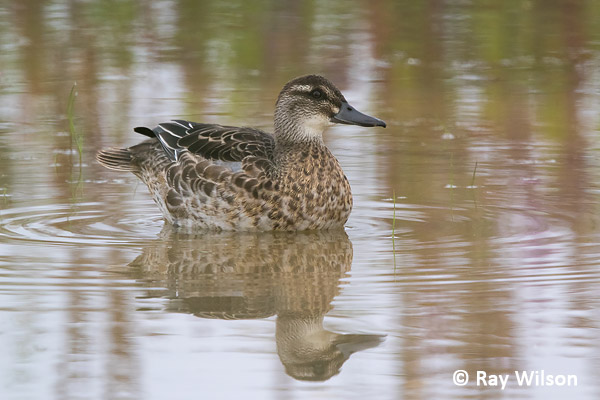
Garganey (Spatula querquedula)
Towards the end of the month there was some very late breeding activity among the Little Grebes on the northern ponds at Attenborough. This pair already had two eggs in the nest and were obviously wanting more...
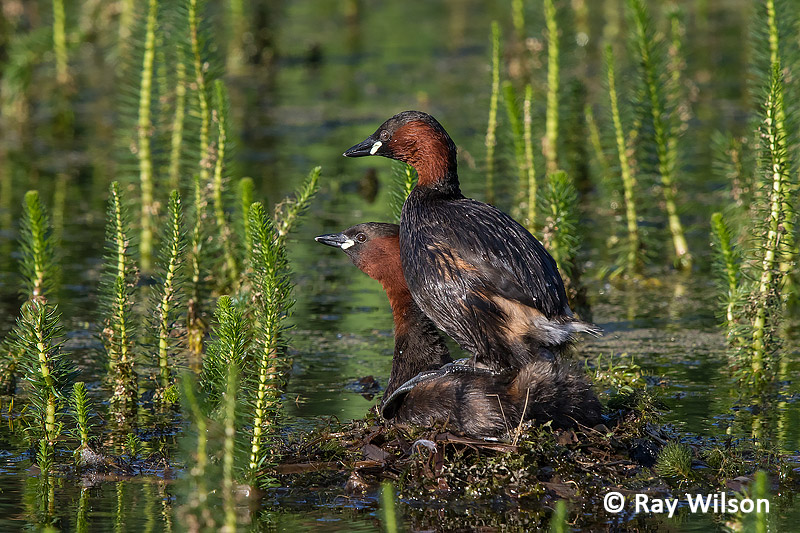
Little Grebe (Tachybaptus ruficollis)
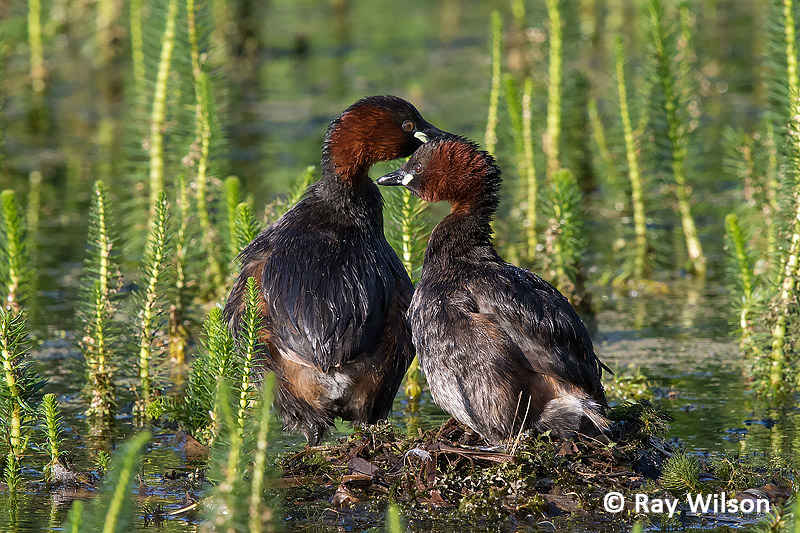
Little Grebe (Tachybaptus ruficollis)
By the end of the week they had four eggs.
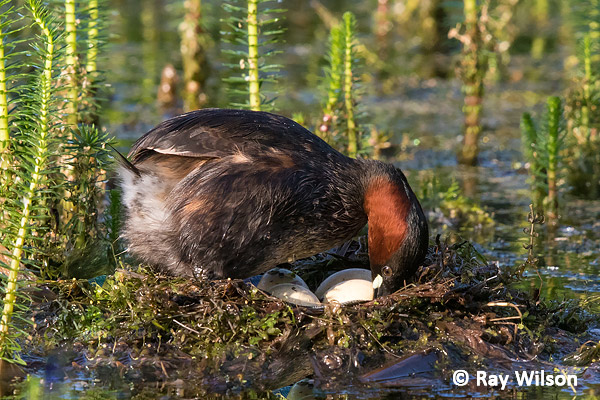
Little Grebe (Tachybaptus ruficollis)
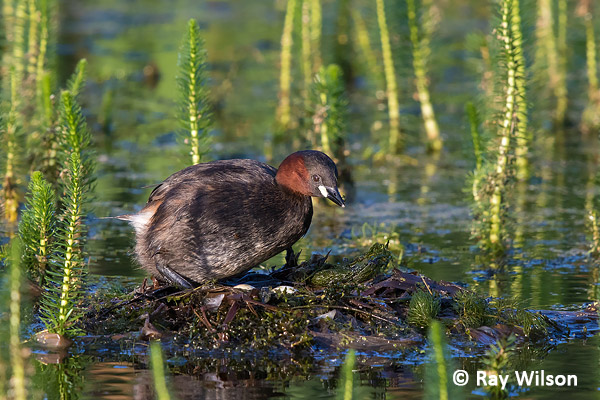
Little Grebe (Tachybaptus ruficollis)
There was a decent selection of shorebirds passing through the reserve all month but most of these were too distant for photography. The exceptions were a few Black-tailed Godwits who could often be seen feeding in the shallow waters of the wet marsh in the late afternoon.
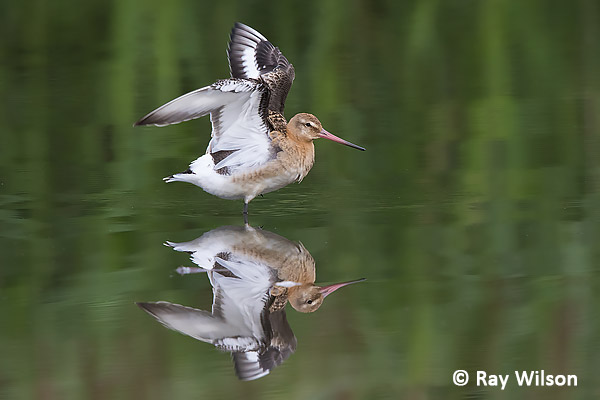
Black-tailed Godwit (Limosa limosa)
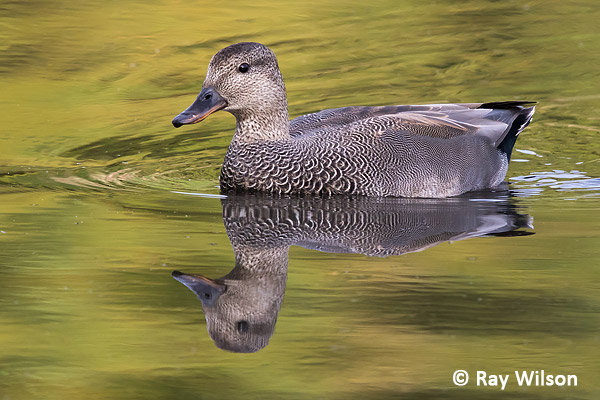
male Gadwall (Mareca strepera)
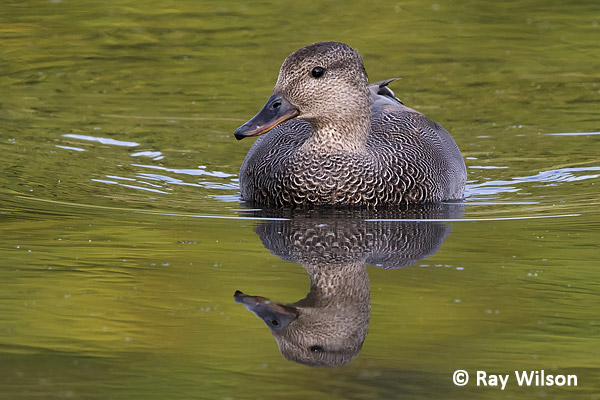
male Gadwall (Mareca strepera)
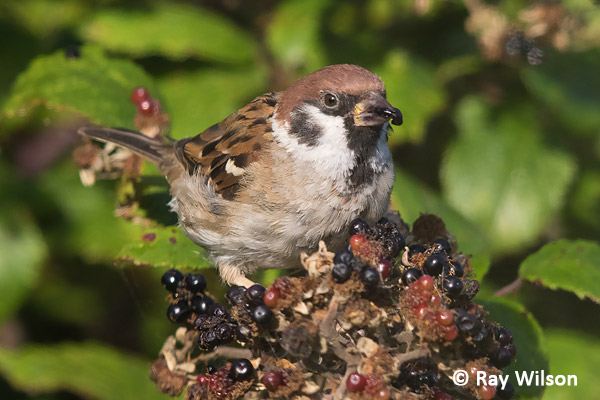
European Tree Sparrow (Passer montanus)
A small flock of Tree Sparrows were regularly seen near the visitor centre gorging themselves on this year's abundant crop of blackberries.
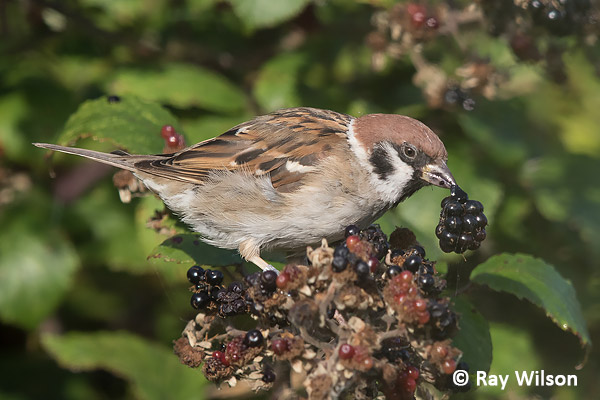
European Tree Sparrow (Passer montanus)
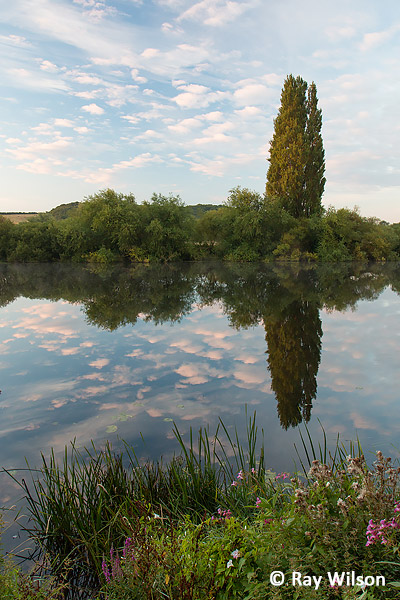
River Trent, Nottinghamshire |

Canary-shouldered Thorn (Ennomos alniaria) |
Throughout the month the number and diversity of moths attracted to the moth trap in my garden was very poor in comparison to previous years and most nights yielded fewer than 20 species. The beautiful Canary-shouldered Thorn was the most common trapped in August.
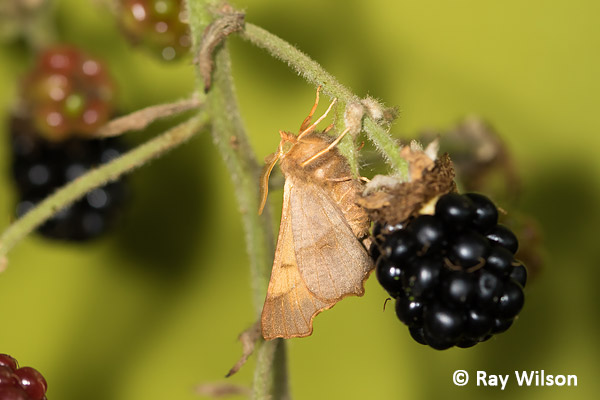
Dusky Thorn (Ennomos fuscantaria)
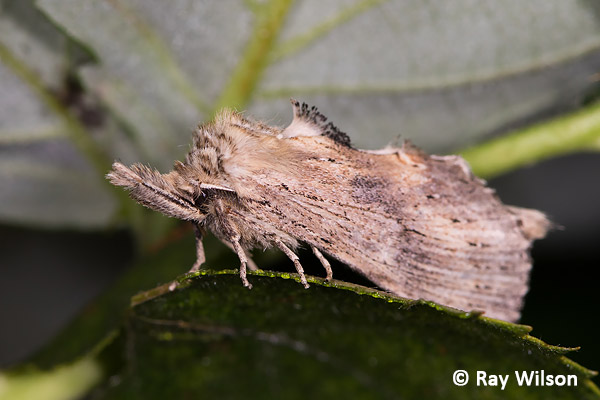
Pale Prominent (Pterostoma palpina)
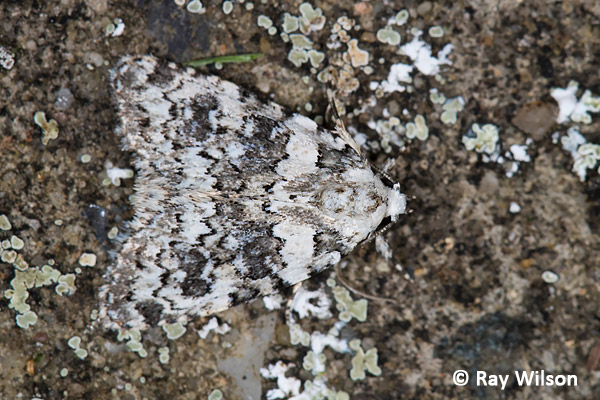
Marbled Beauty (Cryphia domestica)
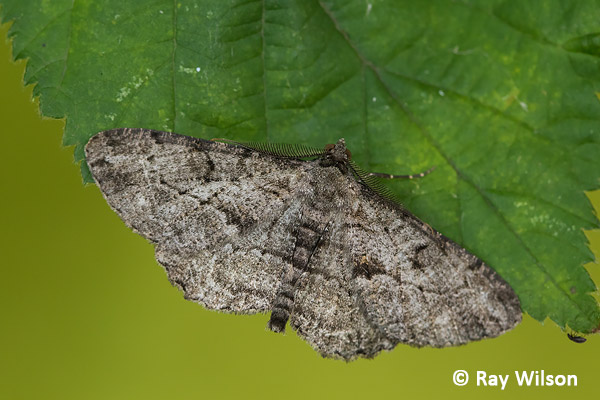
Willow Beauty (Peribatodes rhomboidaria)
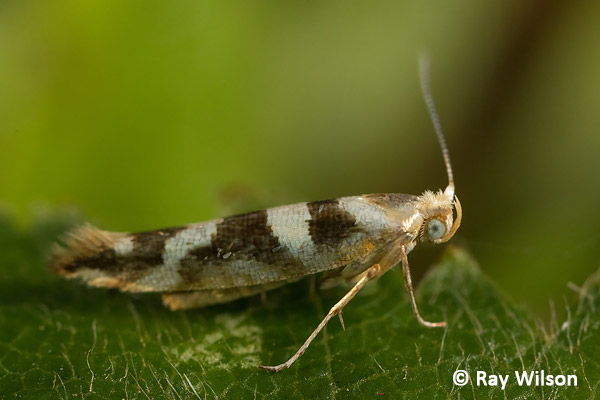
Bronze Alder Moth (Argyresthia goedartella)
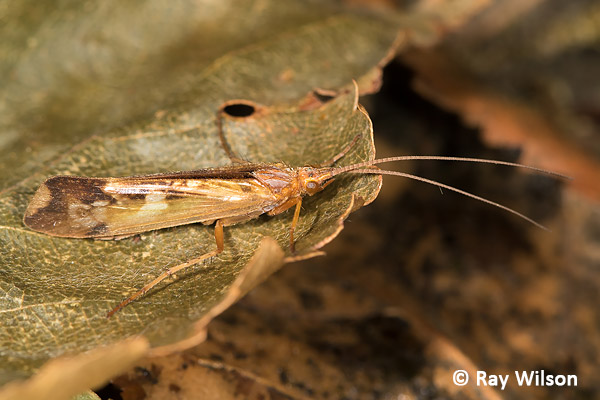
Cinnamon Sedge caddis-fly (Limnephilus lunatus)
Ray Wilson owns the copyright of all images on this site.
They may not be used or copied in any form without prior written permission.
raywilsonphotography@googlemail.com
